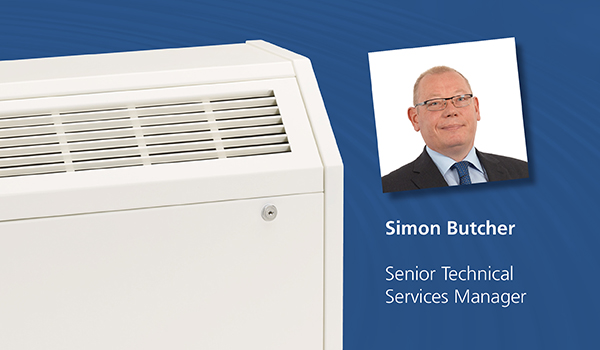Fan convectors have had a long and successful history in working with the broadest range of heat sources in domestic and commercial properties, including heat pumps. In my view, fan convectors will continue as one of the most versatile and highly reactive heat emitters into the future. Improved fan performance, coil design and an ever-growing range of materials available to manufacture casings from creates a wealth of opportunities for the fan convector. Fan convectors are arguably not the newest entrant to the heat emitter market and to the uninitiated may not appear as exciting as some, but the latter can be challenged to the benefit of good system design and performance.
Taking stock of the current situation, we have been driving towards heat sources that create much lower or zero carbon emissions for many years. I can recall many a conversation and debate regarding the demise of gas and oil boilers in new housing in the years running up to 2016, only to be disappointed by the lack of progress. Now we see events like the upcoming UN Climate Change Conference in Glasgow during November 2021, where aspirations to achieve net zero by 2050 will no doubt be discussed, so the pressure is building once more. Ambitious targets will need to be set by many developed nations to reduce carbon emissions by 2030, through the phase out of coal and significant reduction in the use of gas and oil. At the same time agricultural and environmental policies and investment into renewable energies will drive down carbon emissions. Many of us will have a keen eye focusing on the upcoming revision to Part L of the Building Regulations, particularly regarding the removal of gas boilers from new home developments from 2025. If new homes are to achieve the aspiration of 75 – 80% less carbon emissions compared to a new build home today, we are certainly going to be looking at a very different set of challenges.
Regardless of the heat sources available to building designers, contractors and end users, it is reassuring to know there is a fan convector for the job. Smith’s provide output data down to 40oC entering water temperature, at which most heat pumps can deliver a very economical performance. Our fan convectors will provide a superior response time compared to radiators or underfloor heating, so is far better equipped where intermittent usage is a factor. Research undertaken by Smith’s looking at how effectively a fan convector heats a room showed a more even spread of heat was achieved. Of course, you can also benefit from a fan only function in those warmer months to create a more comfortable living environment. With modern homes being built with smaller rooms than those built before 1945, space is always going to be at a premium. A fan convector a fraction of the size of a radiator will meet the demands placed upon it very nicely and modern fans are virtually inaudible in many cases too.
In terms of providing increased efficiencies, fan convectors have a considerably lower water content than radiators or underfloor heating circuits and this can produce savings in the region of 10%. Having introduced Smart controls into many of our products, we can see many advantages here too. Each room can have a highly accurate temperature controller which ensures the greatest level of comfort in the room. Individual room time control allows system loads to be spread out according to demand, whilst removing areas from the circuit that did not need heating. And features such as automatic and manual fan speed control allows the end user the choice over the level of interaction with the product. Smart controls can also allow individual units to communicate with the heat source via wireless relays to ensure demand is met.
A replacement heating system with a ground source heat pump as the heat generator was installed at a community centre in Aberdyfi, West Wales and Smith’s Caspian fan convectors were selected as the system heat emitters. At Neuadd Dyfi, the community centre, a full upgrade to the heating system was undertaken with funding provided by the Welsh Government.
Smith’s Caspian Fan Convector Heat Emitters were chosen because they can run very efficiency in conjunction with renewable heat sources such as the ground source heat pump used here. The flow temperature of the Ground Source Heat Pump at Neuadd Dyfi is 45°C. They were also selected for their lack of noise when running. The Caspian Fan Convectors are installed as concealed units so as to minimise any reduction in useable floor space in the hall.
A retrofit upgrade was completed a couple of years later providing total control of the heating system using Smith’s Smart Control. This allows remote control and monitoring of the heating system by the facilities manager minimising the waste of energy and improving the control and monitoring of the heating of the community facility.

